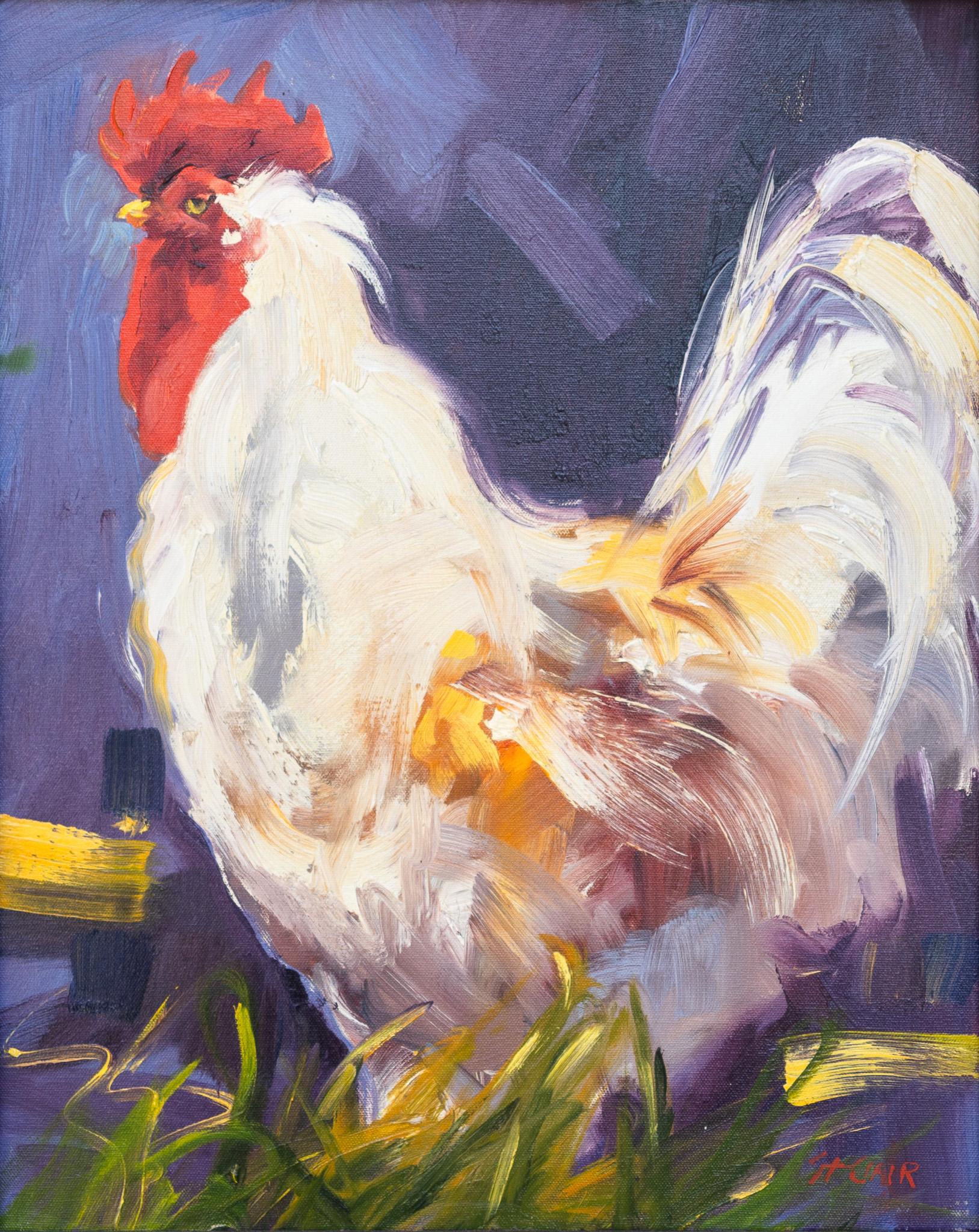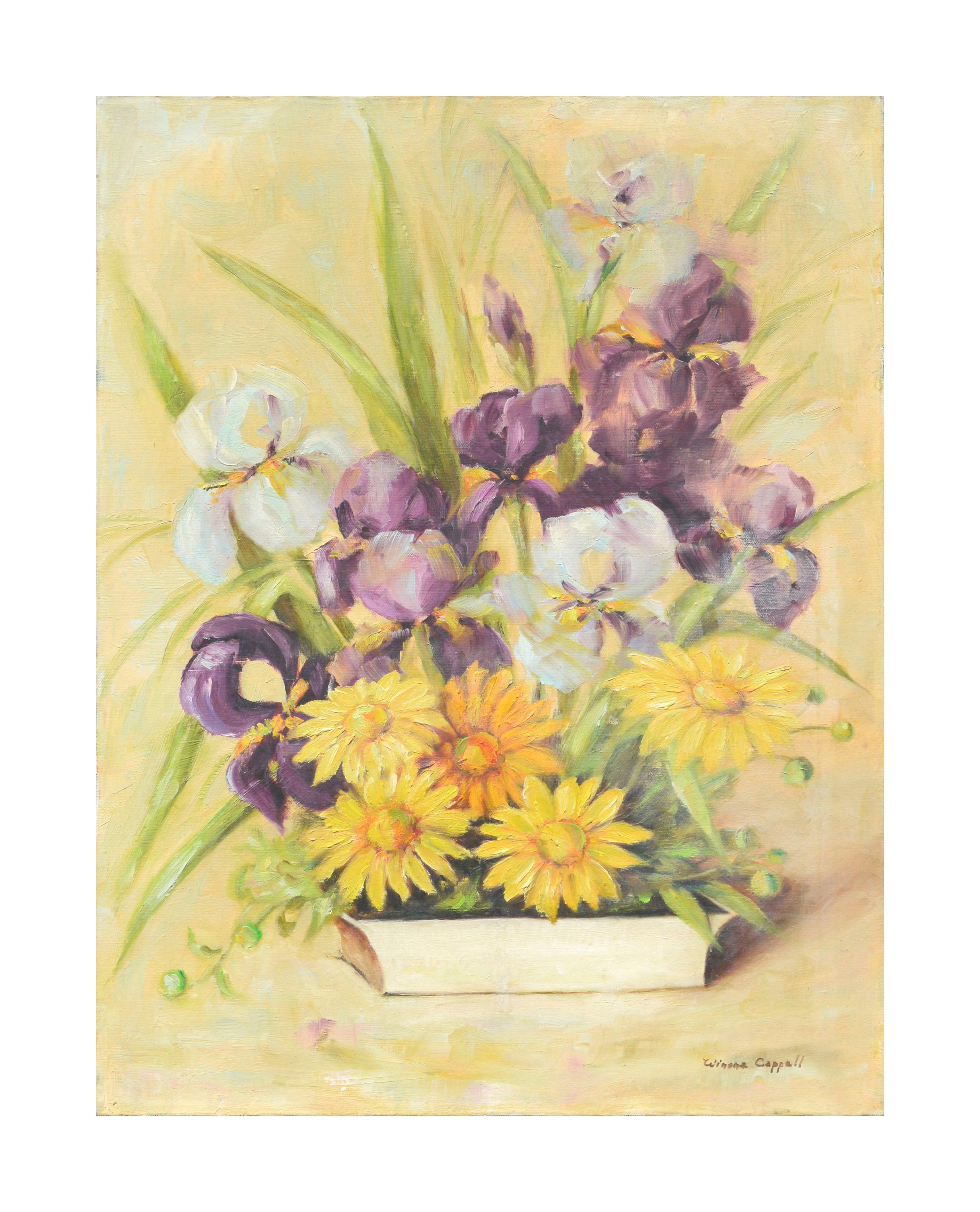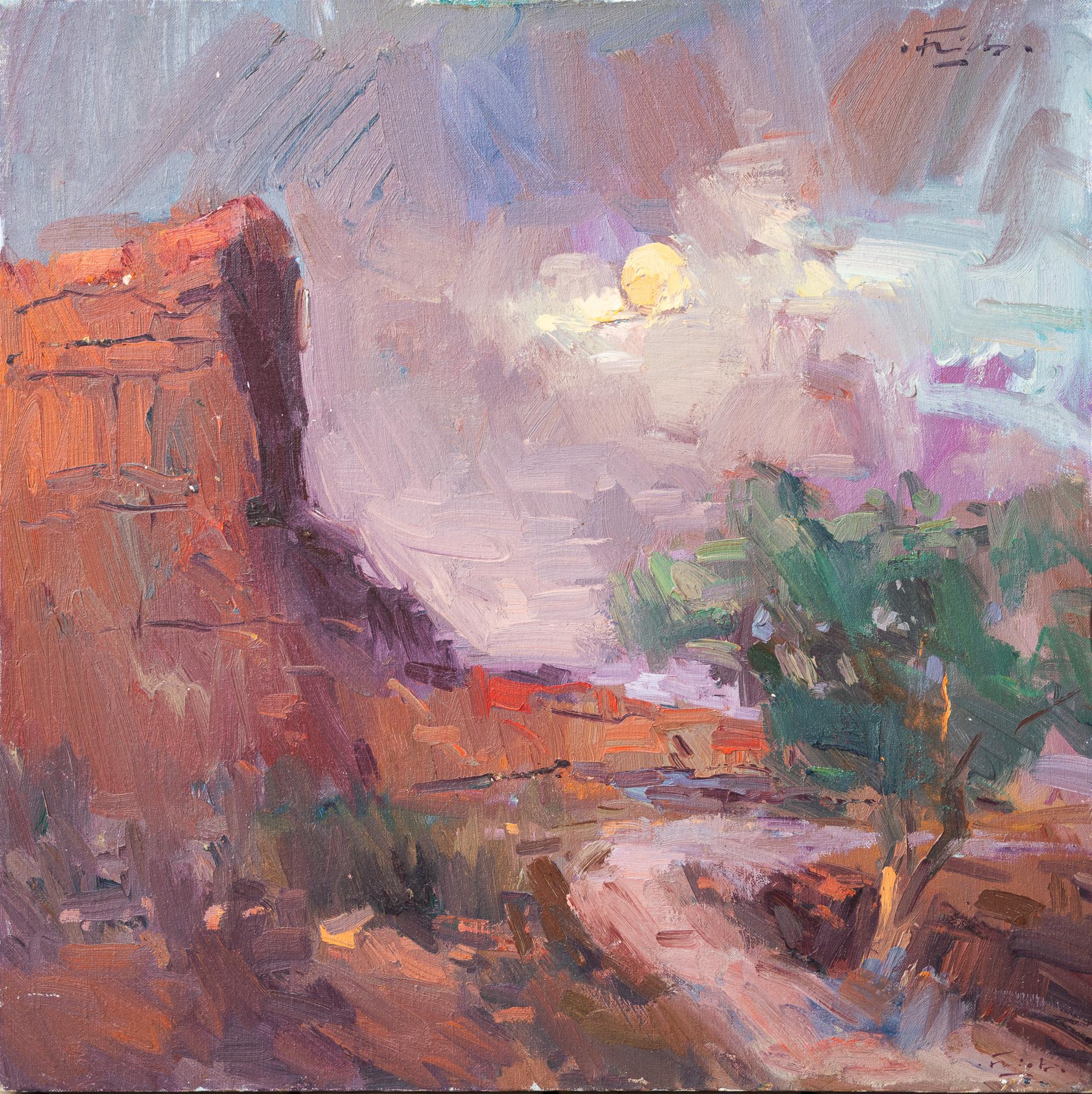Items Similar to "Three Tugs"
Want more images or videos?
Request additional images or videos from the seller
1 of 6
Charles Rosen"Three Tugs"c. 1930
c. 1930
About the Item
Jim’s of Lambertville Fine Art Gallery is proud to offer this piece by Charles Rosen (1878 - 1950).
Charles Rosen was born on April 28, 1878, in Reagantown, Westmoreland County, Pennsylvania. At age sixteen, he opened up a photography studio. However, he quickly lost interest when most of his clients only wanted post-mortem photos of deceased relatives. In 1898, he went to New York City to enter classes at the National Academy of Design, where he studied with Francis Coates Jones. Shortly after, Rosen enrolled at the New York School of Art where he studied with William Merritt Chase and Frank Vincent DuMond. During this time, Rosen became friendly with artists Robert Spencer and Rae Sloan Bredin. Soon all three would move to Bucks County. In 1903, Rosen married Mildred Holden and moved to the New Hope area, renting a place to live from William Lathrop at the Phillips Mill complex. A lasting friendship with Lathrop resulted.
Like his contemporaries Redfield and Schofield, Rosen painted large plein-air canvases with thick impasto and bold brush strokes depicting the scenic Delaware River and surrounding landscape. Rosen was able to accurately portray the atmospheric mood of his subject, whether it is snow-covered vistas or the morning’s autumn haze. These impressionist works were regarded as masterpieces and won many awards, including two Hallgarten prizes from the National Academy of Design in 1910 and 1912, as well as the Altman prize and the Innes Gold Medal in 1916. Rosen also won a Silver Medal at the Panama-Pacific Exposition in San Francisco in 1915.
By 1916, Rosen had determined that he was no longer satisfied with his Impressionist style. In the late 1910s, he began to paint in a cubist-realist style, abandoning impressionism. In 1918, he became an instructor at the Art Students League Summer School in Woodstock, New York. He moved permanently to Woodstock in 1920, where he became closely associated with George Bellows, Eugene Speicher, Henry Lee McFee, and Andrew Dasburg. By the 1920s, Rosen was creating paintings exclusively in the modernist style, mostly landscapes and industrial scenes, as well as the occasional still life. Beginning in 1922, Rosen conducted a painting school for several seasons with McFee and Dasburg. Charles Rosen died in Woodstock at the age of seventy-two.
He exhibited at the Pennsylvania Academy of the Fine Arts (1926 Gold Medal), the Carnegie Institute (1914 prize), the Panama-Pacific Exposition in San Francisco, the Corcoran Gallery of Art, the Art Institute of Chicago, the City Art Museum in St. Louis, the Salons of America, and the Whitney Museum of American Art, among others.
- Creator:Charles Rosen (1878-1950, American)
- Creation Year:c. 1930
- Dimensions:Height: 32 in (81.28 cm)Width: 40 in (101.6 cm)
- More Editions & Sizes:Frame Size 36.5" x 44.5" x 2.5"Price: $74,375
- Medium:
- Movement & Style:
- Period:
- Condition:
- Gallery Location:Lambertville, NJ
- Reference Number:
About the Seller
5.0
Vetted Seller
These experienced sellers undergo a comprehensive evaluation by our team of in-house experts.
Established in 1997
1stDibs seller since 2014
36 sales on 1stDibs
Typical response time: 6 hours
- ShippingRetrieving quote...Ships From: Lambertville, NJ
- Return PolicyThis item cannot be returned.
More From This SellerView All
- "The Canal"By Edward Willis RedfieldLocated in Lambertville, NJJim’s of Lambertville is proud to offer this artwork. Signed lower left. Complemented by a hand carved and gilt frame. Illustrated in "Edward Redfield: Just Values and Fine Seeing" by Constance Kimmerle and the Pennsylvania Academy of the Fine Arts's Exhibition of Paintings by Edward Redfield (April 17 to May 16, 1909) brochure Edward Willis Redfield (1869 - 1965) Edward W. Redfield was born in Bridgeville, Delaware, moving to Philadelphia as a young child. Determined to be an artist from an early age, he studied at the Spring Garden Institute and the Franklin Institute before entering the Pennsylvania Academy from 1887 to 1889, where he studied under Thomas Anshutz, James Kelly, and Thomas Hovenden. Along with his friend and fellow artist, Robert Henri, he traveled abroad in 1889 and studied at the Academie Julian in Paris under William Bouguereau and Tony Robert-Fleury. While in France, Redfield met Elise Deligant, the daughter of an innkeeper, and married in London in 1893. Upon his return to the United States, Redfield and his wife settled in Glenside, Pennsylvania. He remained there until 1898, at which time he moved his family to Center Bridge, a town several miles north of New Hope along the Delaware River. Redfield painted prolifically in the 1890s but it was not until the beginning of the twentieth century that he would develop the bold impressionist style that defined his career. As Redfield’s international reputation spread, many young artists gravitated to New Hope as he was a great inspiration and an iconic role model. Edward Redfield remained in Center Bridge throughout his long life, fathering his six children there. Around 1905 and 1906, Redfield’s style was coming into its own, employing thick vigorous brush strokes tightly woven and layered with a multitude of colors. These large plein-air canvases define the essence of Pennsylvania Impressionism. By 1907, Redfield had perfected his craft and, from this point forward, was creating some of his finest work. Redfield would once again return to France where he painted a small but important body of work between 1907 and 1908. While there, he received an Honorable Mention from the Paris Salon for one of these canvases. In 1910 he was awarded a Gold Medal at the prestigious Buenos Aires Exposition and at the Panama-Pacific Exposition of 1915 in San Francisco, an entire gallery was dedicated for twenty-one of his paintings. Since Redfield painted for Exhibition with the intent to win medals, his best effort often went into his larger paintings. Although he also painted many fine smaller pictures, virtually all of his works were of major award-winning canvas sizes of 38x50 or 50x56 inches. If one were to assign a period of Redfield’s work that was representative of his “best period”, it would have to be from 1907 to 1925. Although he was capable of creating masterpieces though the late 1940s, his style fully matured by 1907 and most work from then through the early twenties was of consistently high quality. In the later 1920s and through the 1930s and 1940s, he was like most other great artists, creating some paintings that were superb examples and others that were of more ordinary quality. Redfield earned an international reputation at a young age, known for accurately recording nature with his canvases and painting virtually all of his work outdoors; Redfield was one of a rare breed. He was regarded as the pioneer of impressionist winter landscape painting in America, having few if any equals. Redfield spent summers in Maine, first at Boothbay Harbor and beginning in the 1920s, on Monhegan Island. There he painted colorful marine and coastal scenes as well as the island’s landscape and fishing shacks. He remained active painting and making Windsor style furniture...Category
Early 1900s American Impressionist Landscape Paintings
MaterialsCanvas, Oil
- "Late Afternoon at Brighton Beach"By Martha WalterLocated in Lambertville, NJJim’s of Lambertville Fine Art Gallery is proud to present this piece by Martha Walter (1875 - 1976). Born in Philadelphia in 1875, Martha Walter attended Girls’ High School followe...Category
1910s American Impressionist Figurative Paintings
MaterialsCanvas, Oil
- "In Port"By Edward Willis RedfieldLocated in Lambertville, NJJim’s of Lambertville is proud to offer this artwork by: Edward Willis Redfield (1869 - 1965) Edward W. Redfield was born in Bridgeville, Delaware, moving to Philadelphia as a young child. Determined to be an artist from an early age, he studied at the Spring Garden Institute and the Franklin Institute before entering the Pennsylvania Academy from 1887 to 1889, where he studied under Thomas Anshutz, James Kelly, and Thomas Hovenden. Along with his friend and fellow artist, Robert Henri, he traveled abroad in 1889 and studied at the Academie Julian in Paris under William Bouguereau and Tony Robert-Fleury. While in France, Redfield met Elise Deligant, the daughter of an innkeeper, and married in London in 1893. Upon his return to the United States, Redfield and his wife settled in Glenside, Pennsylvania. He remained there until 1898, at which time he moved his family to Center Bridge, a town several miles north of New Hope along the Delaware River. Redfield painted prolifically in the 1890s but it was not until the beginning of the twentieth century that he would develop the bold impressionist style that defined his career. As Redfield’s international reputation spread, many young artists gravitated to New Hope as he was a great inspiration and an iconic role model. Edward Redfield remained in Center Bridge throughout his long life, fathering his six children there. Around 1905 and 1906, Redfield’s style was coming into its own, employing thick vigorous brush strokes tightly woven and layered with a multitude of colors. These large plein-air canvases define the essence of Pennsylvania Impressionism. By 1907, Redfield had perfected his craft and, from this point forward, was creating some of his finest work. Redfield would once again return to France where he painted a small but important body of work between 1907 and 1908. While there, he received an Honorable Mention from the Paris Salon for one of these canvases. In 1910 he was awarded a Gold Medal at the prestigious Buenos Aires Exposition and at the Panama-Pacific Exposition of 1915 in San Francisco, an entire gallery was dedicated for twenty-one of his paintings. Since Redfield painted for Exhibition with the intent to win medals, his best effort often went into his larger paintings. Although he also painted many fine smaller pictures, virtually all of his works were of major award-winning canvas sizes of 38x50 or 50x56 inches. If one were to assign a period of Redfield’s work that was representative of his “best period”, it would have to be from 1907 to 1925. Although he was capable of creating masterpieces though the late 1940s, his style fully matured by 1907 and most work from then through the early twenties was of consistently high quality. In the later 1920s and through the 1930s and 1940s, he was like most other great artists, creating some paintings that were superb examples and others that were of more ordinary quality. Redfield earned an international reputation at a young age, known for accurately recording nature with his canvases and painting virtually all of his work outdoors; Redfield was one of a rare breed. He was regarded as the pioneer of impressionist winter landscape painting in America, having few if any equals. Redfield spent summers in Maine, first at Boothbay Harbor and beginning in the 1920s, on Monhegan Island. There he painted colorful marine and coastal scenes as well as the island’s landscape and fishing shacks. He remained active painting and making Windsor style furniture...Category
Early 1900s American Impressionist Landscape Paintings
MaterialsCanvas, Oil
- "Solebury Valley"By William Langson LathropLocated in Lambertville, NJSigned lower right. Complemented by a period frame. William L. Lathrop (1859-1938) Deemed “Father of the New Hope Art Colony”, William Langson Lathrop was born in Warren, Illinois. He was largely self-taught, having only studied briefly with William Merritt Chase in 1887, at the Art Students League. Lathrop first moved east in the early 1880s, and took a job at the Photoengraving Company in New York City. While there, he befriended a fellow employee, Henry B. Snell. The two men became lifelong friends and ultimately, both would be considered central figures among the New Hope Art Colony. Lathrop's early years as an artist were ones of continuing struggle. His efforts to break through in the New York art scene seemed futile, so he scraped enough money together to travel to Europe with Henry Snell in1888. There he met and married an English girl, Annie Burt. Upon returning to New York, he tried his hand at etching, making tools from old saw blades...Category
1910s American Impressionist Landscape Paintings
MaterialsCanvas, Oil
- "Alley Fiends"By John R. GrabachLocated in Lambertville, NJJim’s of Lambertville is proud to offer this artwork by: John R. Grabach (1886 - 1981) John Grabach was a highly regarded New Jersey artist, teacher, and author of the classic text...Category
1930s American Impressionist Landscape Paintings
MaterialsCanvas, Oil
- Winter MoonlightBy George William SotterLocated in Lambertville, NJsigned lower rightCategory
1910s American Impressionist Landscape Paintings
MaterialsCanvas, Oil
You May Also Like
- "Dawn Breaker" Impressionist Rooster PaintingLocated in Austin, TXLinda St. Clair (1952 - 2018) Title: "Dawn Breaker" Medium: Oil on Canvas Dimensions: 20" x 16" Markings: Signed LR "St. Clair" Framing: Framing Options AvailableCategory
Early 2000s American Impressionist Paintings
MaterialsCanvas, Oil
- Flower Still Life, Oil Painting by Thomas StricklandBy Thomas StricklandLocated in Long Island City, NYArtist: Thomas Strickland, American (1923 - 1999) Title: Flower Still Life Year: circa 1960 Medium: Oil on Canvas, signed u.l. Size: 20 x 24 inches Frame: 31 x 27.5 inchesCategory
1960s American Impressionist Still-life Paintings
MaterialsCanvas, Oil
- Mid Century Autumn Bay Area Mountains LandscapeLocated in Soquel, CABeautiful plein air painting of Bay Area mountains in autumn by Charles Eades (American, 1949-2009) circa 1965. Signed lower left corner "Chas. Eades." Unframed. Image 18"H x 24"W. ...Category
1960s American Impressionist Landscape Paintings
MaterialsCanvas, Oil, Cardboard
- Vintage Irises and Daisies Still LifeLocated in Soquel, CAWonderful 1970s still life of Japanese irises and marguerite daisies by Winona Cappell (American, 20th century). Signed lower right corner. Unframed. Image size: 24"H x 18"W. Cappel...Category
1970s American Impressionist Still-life Paintings
MaterialsCanvas, Oil
- Hilltop Trail Landscape by Ken LucasBy Kenneth LucasLocated in Soquel, CAA small, winding trail invites the viewer into this beautiful verdant landscape by California artist Ken Lucas (American, 20th Century). Signed "Ken Lucas" o...Category
1990s American Impressionist Landscape Paintings
MaterialsCanvas, Oil, Illustration Board
- "Moon Over Monument Valley"Located in Austin, TXAn American Impressionist depiction of a moonlit night in Monument Valley, Arizona. It features a palette of purple, pink, and dark blue. Artist: Guido Frick...Category
21st Century and Contemporary American Impressionist Landscape Paintings
MaterialsCanvas, Oil
Recently Viewed
View AllMore Ways To Browse
The Three Ages
Three Large Paintings
Three Piece Painting
Industrial Scene
Panama Art
Panama Painting
Charles Close Oil Paintings
Art Of Panama City
Art American Post Impressionism
Painting Of St Francis
Bucks County Art
William Jones Painting
Post Modernist Large Paintings
Paintings By Robert Phillip
Bucks County Painting
Bucks County Frame
Vintage Delaware
Robert Mills





